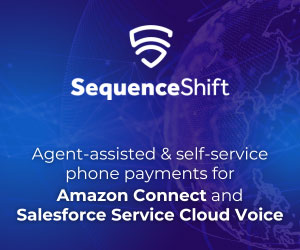Today’s customers expect more from the brands they buy from.
No one wants to feel like just another number on a spreadsheet. We want to interact with companies who understand our pain points, respect our values, and appreciate our needs. The age of the one-size-fits-all CX strategy is over. So, what does that mean for today’s companies?
Currently, around 89% of all brands are investing in personalization as a crucial strategy for future success. This means gathering more information about the different segments of your target audience, adapting your CX strategy to serve unique groups, and tracking your results.
Although successfully creating personalized customer experiences does require significant planning and effort, it also opens the door to incredible results. For instance, 80% of consumers are more likely to buy from a brand offering personalized experiences.
Why Personalized Customer Experience Is Crucial
Every company, no matter the industry, is facing increased competition in today’s world. There are endless other businesses like yours offering the same products, features, and even pricing points. This means the only way to truly stand out is to offer an experience your audience won’t forget.
Highly personalized customer experiences, informed by genuine CX data, significantly improve customer loyalty, increasing your chances of long-term sales.
McKinsey found that personalization at scale often delivers at least a 1-2% increase in total sales while reducing sales and marketing costs by around 10-20%.
On top of that, successful personalization programs also yield more engaged customers. Remember, a positive customer experience drives up to 15% increases in sales conversion rates.
Personalized experiences also reduce your risk of customer churn. As studies from 2019 show, consumers are more likely to get frustrated and abandon a brand when they’re offered generic, irrelevant service and guidance.
So, how do you create personalized customer experiences?
1. Get to Know Your Customers
The most important thing you’ll need to do before you can personalize customer experiences is get to know your customers a little better.
Delivering personalized customer service is impossible if you don’t know anything about your target audience. With that in mind, take a closer look at the analytics tools and databases you have at your disposal.
Your hybrid contact centre software is home to countless recorded conversations and metrics from previous interactions with customers.
If you choose a solution with its own analytics tools, like dashboards and wallboards, you can even set up strategies to ensure you’re always collecting valuable information about things like customer preferences and satisfaction scores.
Your CRM system (Customer Relationship Management) is another excellent source of information on your target audience, providing insights into different kinds of buyers and purchasing trends.
Combine this with an AI analytics system, and you can begin to build a better view of the end-to-end customer journey. Other places to collect information about customers include:
- Sales and marketing teams: These professionals frequently interact with customers in a range of environments and may be able to offer insights into trends.
- Self-service and chatbot conversations: What do your customers usually ask about when seeking out help?
- Conversion and purchasing history: Where do your customers come from, their demographics, which products do they buy most often? Where does their purchase begin?
2. Be Versatile
The chances are you don’t have just one “type” of customer in your community, but various different groups, driven by different goals, expectations, and pain points. With that in mind, you need to offer more than one kind of customer service.
Designing an omnichannel contact centre that not only allows you to connect with your audience in their preferred channels but also aligns those conversations for you is crucial. Giving your customers plenty of options will ensure you can connect to all kinds of clients with different needs.
For instance, you might have a standard contact centre phone system in place for dealing with regular calls, while you use instant chat and SMS messaging to answer questions quickly for customers who don’t want to talk on a phone.
It’s also worth offering self-service solutions for people who prefer to solve most of their issues for themselves.
Offering a range of different approaches to customer service shows your clients that you understand they’re all different – with unique preferences. Just make sure that all the options you offer are well-managed.
For instance, it’s no good having a live chat service if you don’t have the workforce to respond to customer messages.
3. Empower Customer Service Teams
Your customer service agents and professionals are the key to an excellent experience for your target audience.
Without the right guidance, tools, and support, these team members can’t deliver the personalized moments your clients are looking for. With that in mind, it’s important to ensure you’re empowering your teams to do their best work.
There are plenty of ways to support your staff members in today’s digital world. Having a dashboard or wallboard system where your employees can track things like their personal Net Promoter Score or Customer Satisfaction rating will help them to see whether they’re performing according to the expectations of the business.
Allowing supervisors and managers to monitor these metrics will also mean they can step in to help when employees need help personalizing the experience.
Employees can also access assistance within the CCaaS (contact centre) technology. Bots and AI assistants can pull information from integrated systems like CRM solutions and service desk systems to give agents an immediate insight into their customers whenever they answer a call or message.
This helps to align the conversation for the customer across each channel and prevents them from having to repeat themselves to multiple agents.
Even giving your employees collaboration tools within their contact centre technology, so they can reach out to specialists when they need help dealing with specific customer problems can improve the overall impact of the CX experience.
4. Leverage Intelligence and Analytics
Delivering a highly personalized experience to every customer at every stage of their journey would be impossible without the right technology. Fortunately, there are countless tools in the CCaaS environment that can help with this today.
We’ve already mentioned how AI assistants and chatbots can leverage information quickly for both contact centre agents and customers.
Elsewhere in the customer journey, an intelligent contact centre routing solution could automatically detect the keywords in a customer’s query and use that information to direct the call or question to the agent with the best training or skills.
The same solution could look into the CRM entry of the customer to find out if they’ve spoken to specific agents in the past. This could allow companies to connect clients to the same service representative as often as possible.
A digital contact centre with intelligence built-in can also collect information about the customer journey more efficiently, making it easier for companies to understand their clients.
Your system can collect historical information about your customer’s journeys to help you make more accurate predictions about future trends and changes in customer preferences.
For instance, you might learn that certain younger customers are more likely to reach out via SMS, while older clients prefer to get in touch over the phone.
Real-time analytics and insights can also give you an overview of things like general customer satisfaction and even sentiment.
AI solutions with natural language processing and understanding technology built-in can identify how any customer feels in a conversation. The same tools can then guide agents towards the strategies most likely to lead to satisfaction.
5. Collect Constant Feedback
For the most part, a truly personalized customer experience will rely heavily on the use and understanding of data.
On the one hand, today’s companies are in an excellent position to improve customer experience strategies. We have more access to information than ever before and countless tools to help us analyze the information we collect.
On the other hand, the sheer number of customer service channels and the rising complexity of the customer journey mean many companies still don’t know how to use the information they have correctly.
The key to the future of personalized customer experiences will be learning how to collect the most valuable information and actively improve interactions.
For instance, soliciting genuine feedback from customers, aligned with reviews and ratings left on your website can give you an insight into the things that certain groups like and dislike about your quality of service.
Collecting feedback from your teams, on the other hand, can give you an overview of the tools they’re struggling to use effectively and the strategies that aren’t working as well to boost customer experience.
Usually, improving the customer experience means looking not just at the opinions of your customers, but also at the needs of the agents responsible for keeping clients happy.
Ready to Personalize Customer Experience?
The demand for more personalized customer experiences will only continue to grow in the years ahead. With this in mind, companies need to be prepared to respond to the changing expectations of their audience.
If your CCaaS solution isn’t equipped to handle the future of customer experience, maybe it’s time to reach out and prepare for a transformative change.
Author: Guest Author
Published On: 5th Jul 2022
Read more about - Guest Blogs, Geomant




































